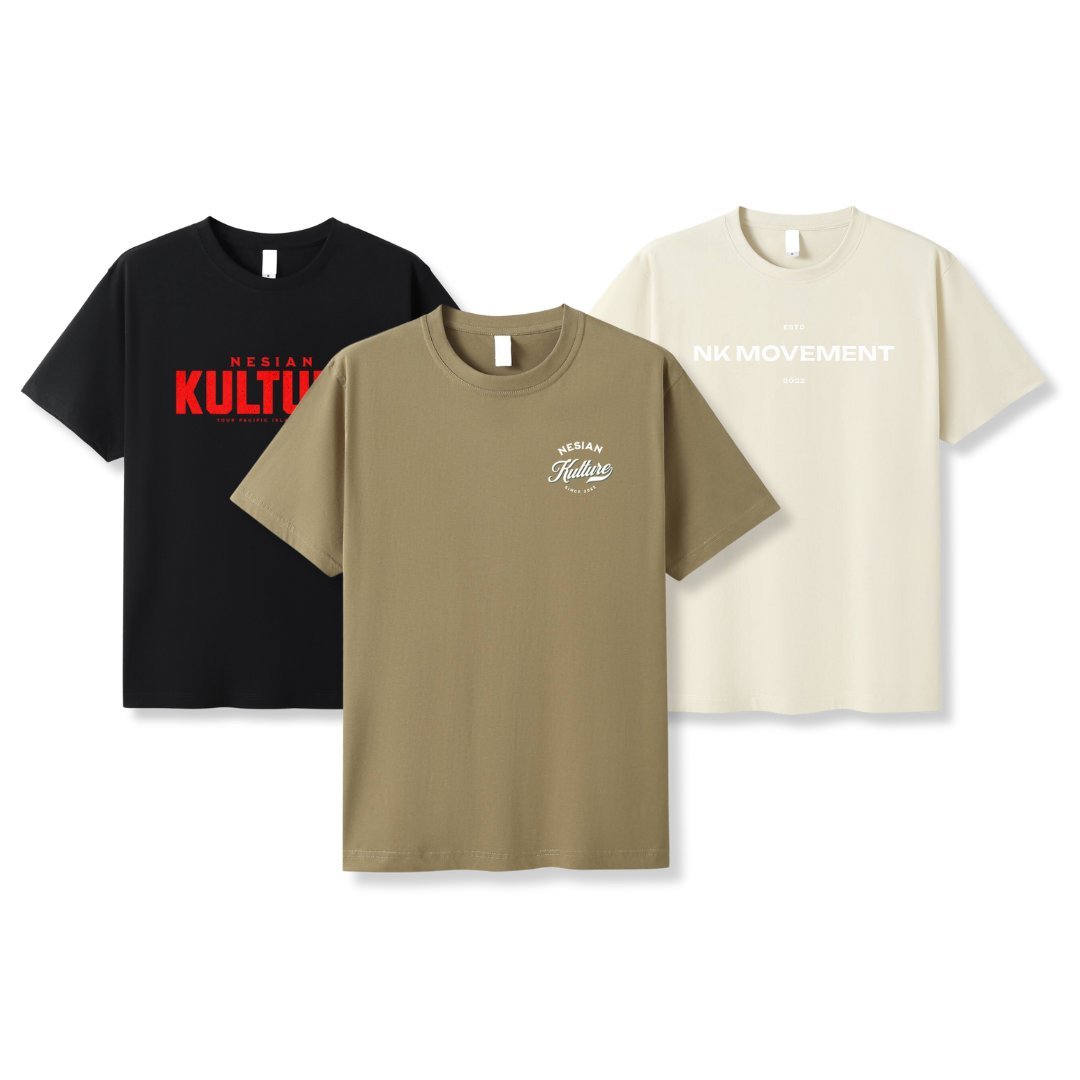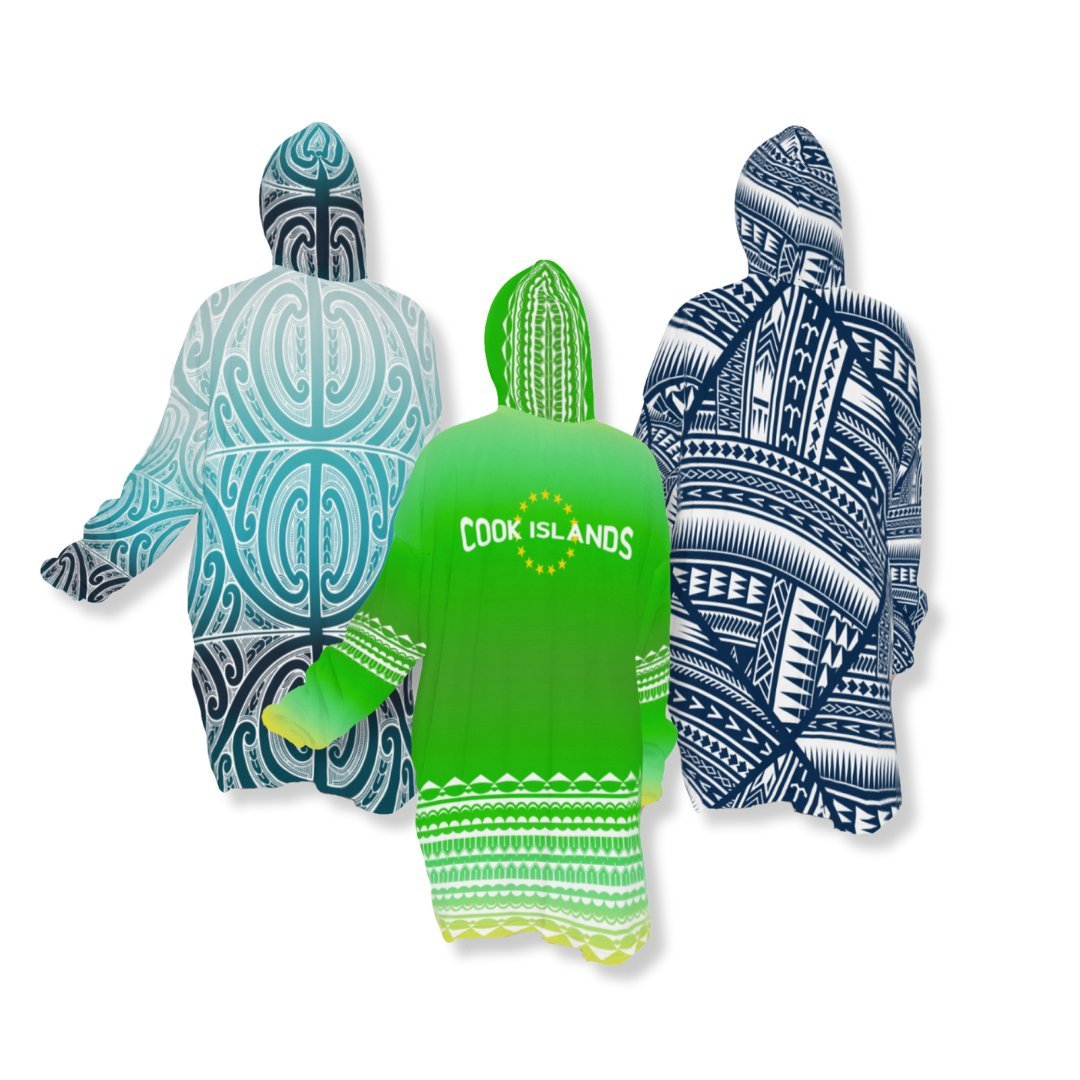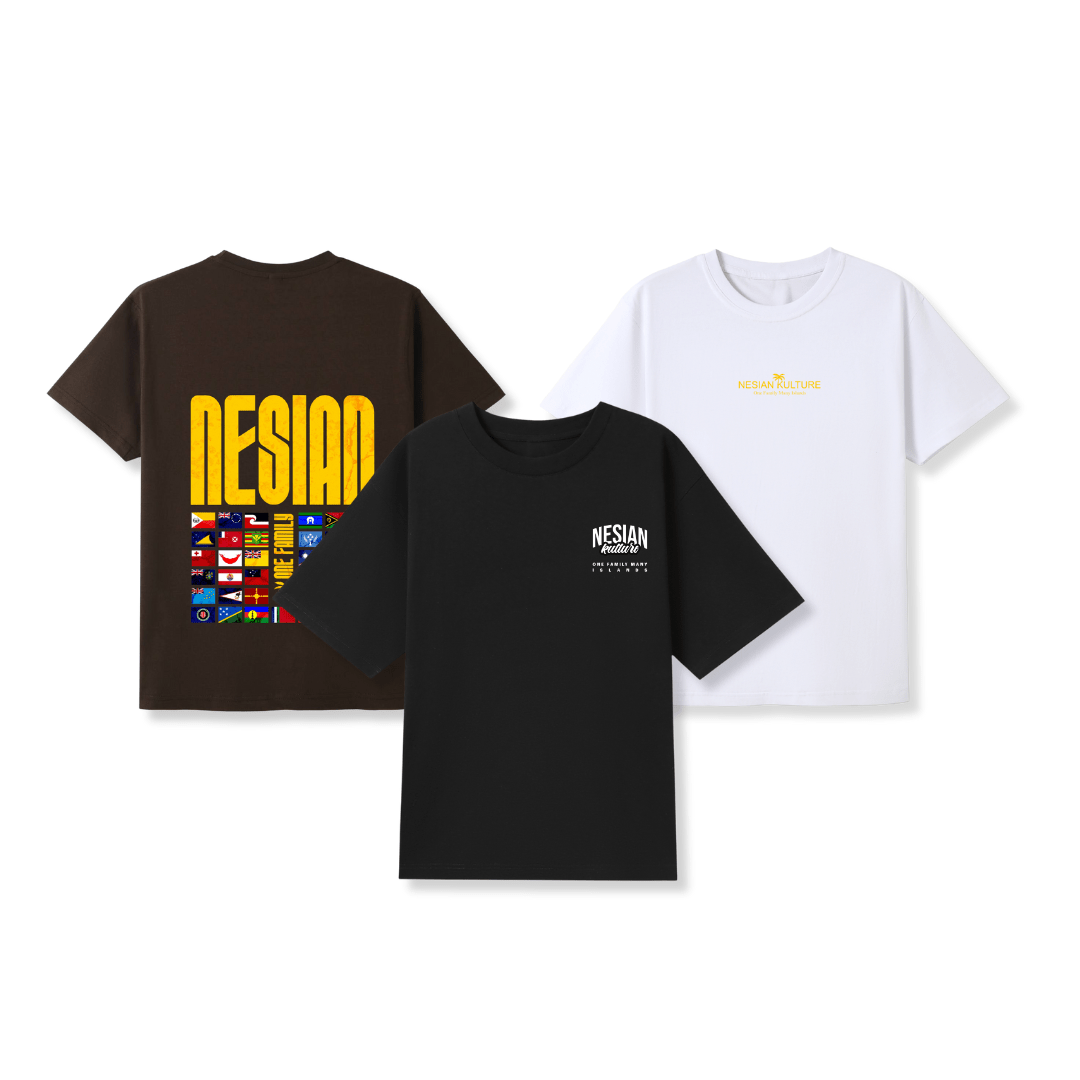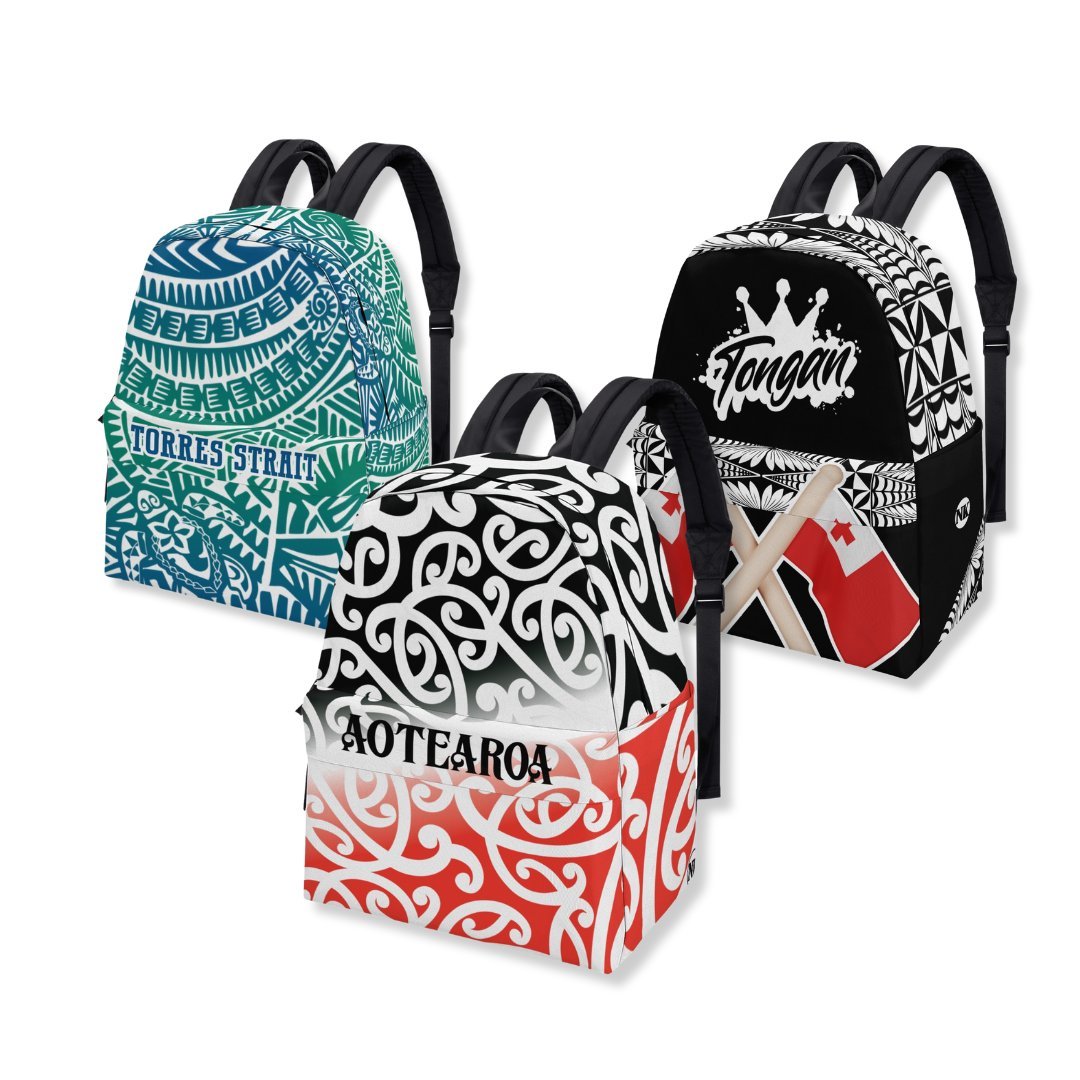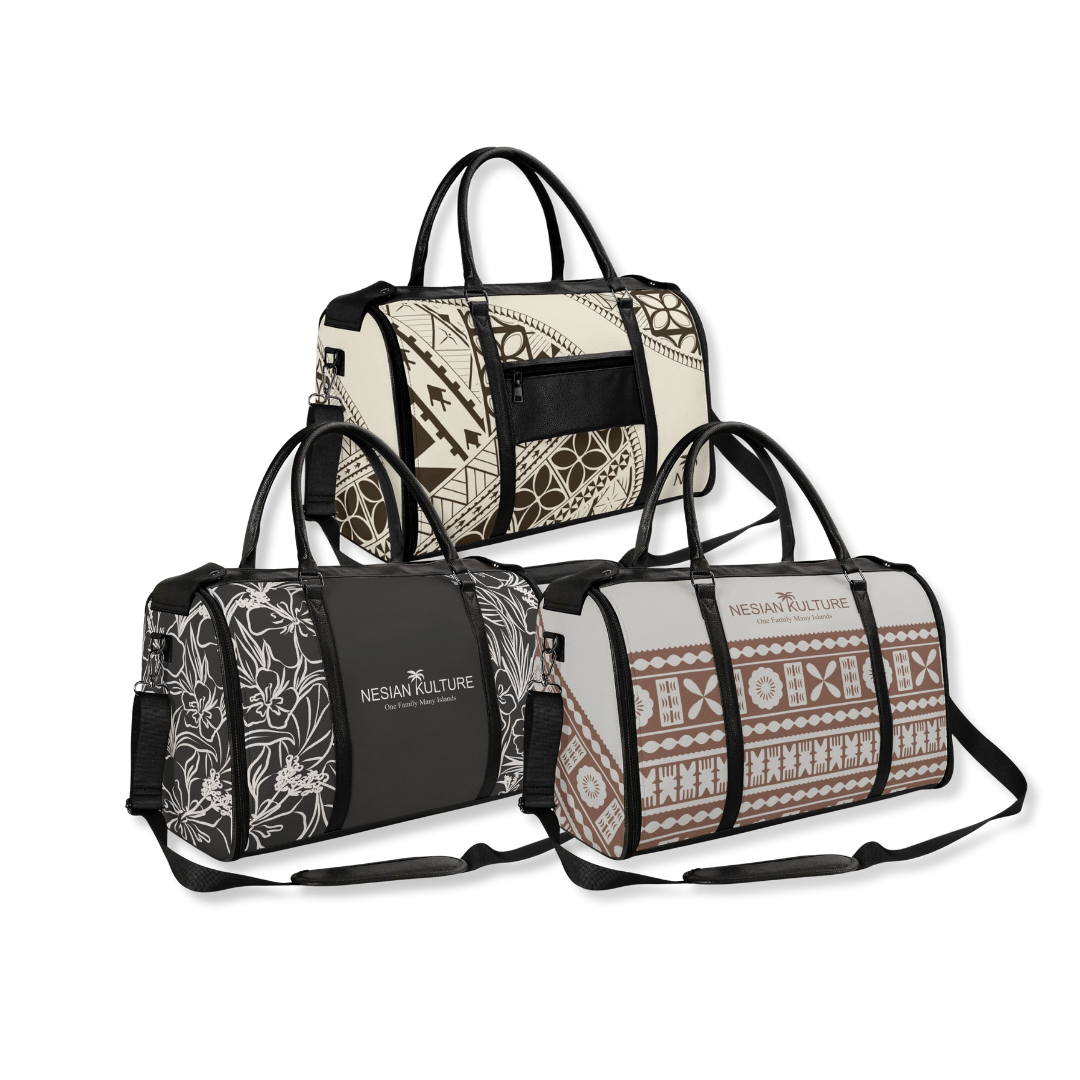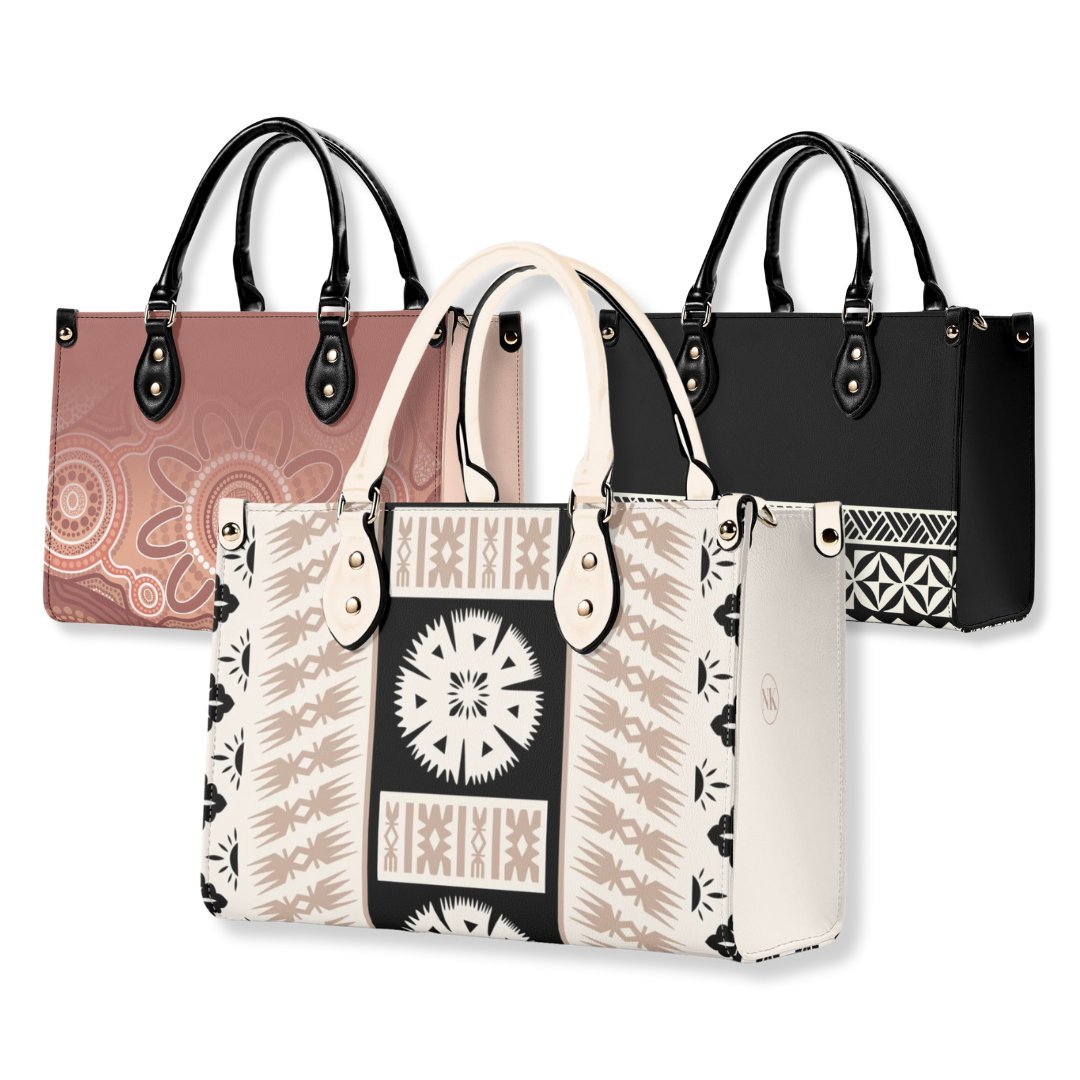
What Polynesian Flags Really Mean.
From Division to Devotion
There’s something sacred about seeing your flag — stitched on a hoodie, waved at a festival, or wrapped around your shoulders like armour.
For many Pacific Islanders, especially in Polynesia, our flags are a symbol of honour.
But for others, they’re a painful reminder. A reminder of colonial intrusion, of land taken, of languages silenced, and of a history we didn’t ask for.
So let’s address the truth. Some of our flags came from royal hands. Others from foreign ones. And some from in-between.
With deep love, acknowledgement, and respect for every island, here are some of the flags we’ll explore — not to create division, but to shift perspective, bring truth to light, and honour the stories stitched into each design. We carry this with unity, not comparison.
Tonga – A Kingdom That Stood on Its Own
Tonga is one of the few Pacific nations never colonised. But that doesn’t mean outside influence didn’t seep in.
Flag Origin:
-
Adopted in 1875 by King George Tupou I.
-
Designed with the help of Christian missionaries.
-
The red cross represents Christianity.
-
The white symbolizes purity.
-
The red is said to represent the blood of Christ.
Deeper Truth:
-
The flag became official under the 1875 Constitution of Tonga, which was drafted with missionary guidance.
-
Christianity had already become deeply embedded in the monarchy.
Why It Matters: Tonga embraced Christianity by choice, not force — but missionary presence undeniably influenced its national identity. The flag reflects both royal authority and the nation’s spiritual foundation.
Samoa – The Flag of Freedom
Flag Origin:
-
Officially adopted on January 1, 1962, when Samoa gained independence from New Zealand.
-
Blue stands for freedom and the Pacific Ocean.
-
Red symbolizes courage.
-
White represents purity.
-
The Southern Cross represents Samoa’s location in the Southern Hemisphere.
Deeper Truth:
-
Prior to 1962, Samoa went through multiple flags:
-
Under German rule (1900–1914), the German colonial flag was used.
-
Under New Zealand administration (1914–1962), Samoa flew the Union Jack and Blue Ensign variants.
-
-
The current design was introduced in 1949 under the UN trusteeship but only became the national flag after independence in 1962.
Why It Matters: Samoa’s flag wasn’t inherited — it was claimed. It marked the moment Samoans reclaimed their right to self-determination after decades of outside control.
Cook Islands – Between Sovereignty and Symbolism
Flag Origin:
-
Adopted in 1979.
-
Based on a British Blue Ensign.
-
The Union Jack symbolizes historical ties to Britain.
-
15 white stars represent the 15 islands in the group.
Deeper Truth:
-
The Cook Islands remains in free association with New Zealand, meaning they handle domestic affairs but leave defence and foreign relations to NZ.
-
Earlier flags also featured the Union Jack, with versions used during British protectorate status and New Zealand administration.
Why It Matters: Though the design reflects colonial history, Cook Islanders have infused it with their own meaning — unity, island identity, and cultural honour.
Niue – A Flag Designed by Foreign Influence
Flag Origin:
-
Adopted in 1975.
-
Features a yellow field, symbolising sunshine and warm relations.
-
Displays the Union Jack, showing British influence.
-
Includes a blue disc with stars, reflecting the Southern Cross and loyalty.
Deeper Truth:
-
The design was created under the leadership of Sir Robert Rex, Niue’s first Premier, who had close ties with New Zealand.
-
Niue, like the Cook Islands, is in free association with New Zealand.
Why It Matters: The flag wasn't chosen by elders or cultural leaders but by political leaders in a time of transition. Yet many Niueans today see it as a symbol of resilience and connection.
French Polynesia – A Flag Within a Flag
Flag Origin:
-
Adopted in 1984.
-
Red and white are traditional Polynesian colors.
-
The emblem shows a canoe with five people, a sun, and waves.
Deeper Truth:
-
This is a territorial flag, used locally within French Polynesia.
-
Officially, French Polynesia is still under the sovereignty of France, and the French national flag is the official flag used internationally.
Why It Matters: Despite still being under foreign rule, this local flag is a proud symbol of Polynesian unity, tradition, and strength. It reclaims identity within political limitations.
American Samoa – Symbols of Strength and Authority
Flag Origin:
-
Adopted in 1960 while under U.S. administration.
-
Features a bald eagle, representing U.S. protection.
-
The eagle holds a fue (talking stick) and uatogi (war club).
What’s Real: As a U.S. territory, the flag reflects American ties, but the Samoan symbols at the eagle’s feet represent wisdom and leadership, connecting back to traditional Samoan governance.
What’s Powerful: Though the eagle is not native, the fue and uatogi are ours. The message is clear: We adapt, but we do not erase who we are.
Why It Matters: This flag is a visual fusion — showing that even when global powers leave their mark, our ancestral values still lead. Samoans carry forward the strength of chiefs, orators, and warriors.
Māori (Aotearoa) – A Flag of Resistance and Renewal
Flag Origin:
-
Known as the Tino Rangatiratanga flag, created in 1990 by Māori activists.
-
Black, red, and white with the koru (spiral) design.
What’s Real: The official New Zealand flag bears colonial legacy. This flag, however, was created to represent indigenous sovereignty and the Māori worldview.
What’s Powerful: It’s not just a protest flag. It’s a symbol of life, growth, and the right to self-determination. The Māori flag reclaims space the crown once tried to dominate.
Why It Matters: Flying this flag is not about politics — it’s about reviving what colonisation tried to bury. It’s a declaration that the tangata whenua (people of the land) are still standing with deep honour.
Hawai‘i – Duality in Design, Unity in Resistance
Flag Origin:
-
Features the Union Jack and eight stripes for each island.
-
Designed in the early 1800s under King Kamehameha I.
What’s Real: The flag was a political strategy to avoid colonisation by balancing British and American interests.
What’s Powerful: Today, the flag is flown in both grief and honour — a sign of the stolen Hawaiian Kingdom, and a rallying cry for cultural restoration. It’s a reminder that the Kingdom still lives in its people.
Why It Matters: This flag holds the heartbeat of a kingdom that refuses to be forgotten. Every wave of this banner is a quiet rebellion — and a tribute to Hawaiian strength and sovereignty.
Rapa Nui (Easter Island) – Ancestral Royalty Reclaimed
Flag Origin:
-
Known as Te Reva Reimiro.
-
Features a red reimiro (crescent chest ornament) on a white background.
What’s Real: This flag is not official under Chilean governance but is widely used by Rapa Nui people to honour their own heritage.
What’s Powerful: The reimiro symbolises nobility, mana, and ancestral dignity. The flag is an act of cultural preservation in a land that continues to resist outside rule.
Why It Matters: Te Reva Reimiro isn’t just about identity — it’s about sovereignty of spirit. Even without political recognition, this flag flies with ancestral authority.
Wallis and Futuna – Cultural Identity Behind the Curtain
Flag Origin:
-
Official French flag is used internationally.
-
A local ensign exists featuring a red field with a white cross.
What’s Real: Though still a French overseas territory, the people maintain strong Polynesian roots.
What’s Powerful: Even without global recognition, the cultural identity remains firm. Behind the French colours lives a proud and resilient Polynesian spirit.
Why It Matters: Wallis and Futuna’s people quietly protect their cultural fire. The flags used may be foreign — but the hearts behind them beat island blood.
Tuvalu – The Stars That Still Shine
Flag Origin:
-
Adopted in 1978 after independence from the UK.
-
Features the Union Jack and nine stars representing the islands.
What’s Real: The presence of the Union Jack remains controversial, viewed by some as a symbol of colonial leftovers.
What’s Powerful: Tuvaluans have embraced the stars as a sign of resilience, identity, and sacred geography. Their flag represents a nation facing rising tides but refusing to sink.
Why It Matters: Tuvalu stands on the frontlines of climate change. Their flag is not just political — it’s a reminder to the world that this tiny island nation still fights to be seen and to stay above water.
Tokelau – Navigating with Heritage
Flag Origin:
-
Adopted in 2009.
-
Shows a canoe sailing toward the Southern Cross.
What’s Real: As a New Zealand territory, Tokelau was late to gain its own flag.
What’s Powerful: The canoe represents ancestral knowledge and voyaging strength. The flag reflects a people charting their future with honour in their past.
Why It Matters: Tokelau is a small but proud community. Their flag is a symbol of direction, unity, and the journey forward while honouring sacred navigational roots.
Rotuma – A Voice Within a Larger Nation
Flag Origin:
-
Unofficial, but widely respected.
-
Created to express Rotuman cultural identity, distinct from mainland Fiji.
What’s Real: Rotuma is politically part of Fiji but culturally very different.
What’s Powerful: The flag stands as a cultural boundary, reminding all that identity isn't erased by borders. Rotuma lives on in language, customs, and honour.
Why It Matters: This unofficial flag is a declaration of distinction, proudly separating the Rotuman story from broader national narratives. It speaks to a cultural endurance that deserves its own stage.
Pitcairn Islands – Legacy in Isolation
Flag Origin:
-
Adopted in 1984 as a British overseas territory.
-
Features a coat of arms with anchor, shield, and Bible.
What’s Real: The flag is colonial in design but meaningful to locals who trace their lineage to the HMS Bounty mutineers.
What’s Powerful: In one of the most remote communities in the world, this flag tells a story of rebellion, survival, and generational endurance.
Why It Matters: Pitcairn’s flag isn’t just about heritage — it’s about remembrance. It reflects a unique blend of isolation, legacy, and the quiet strength of a people still writing their chapter.
What These Flags Really Represent
Some of our flags were chosen by kings. Some were inherited from colonizers. Others came from a place in-between.
But they all carry a story — not of perfection, but of perseverance.
To those who carry pain when they see a flag… we see you.
But let that pain turn to power. Let the memory of what your ancestors endured be the reason you stand taller, not the reason you shrink.
Your ancestors didn’t fight for a perfect flag. They fought so you could live.
Let the flag remind you: you weren’t wiped out. You multiplied.
This Is Nesian Kulture
We don’t wear flags as trends. We wear them with truth, remembrance, and honour.
Our ancestors survived the storms. Our people continue the journey.
Every stitch, every symbol, every colour we print holds the message:
"We are still here."
Related Posts

ONE FAMILY. MANY ISLANDS — THE STORY BEHIND THE WORDS
Discover the true story behind Nesian Kulture’s tagline “One Family. Many Islands.” — a movement born from Susan’s childhood as...
En savoir plus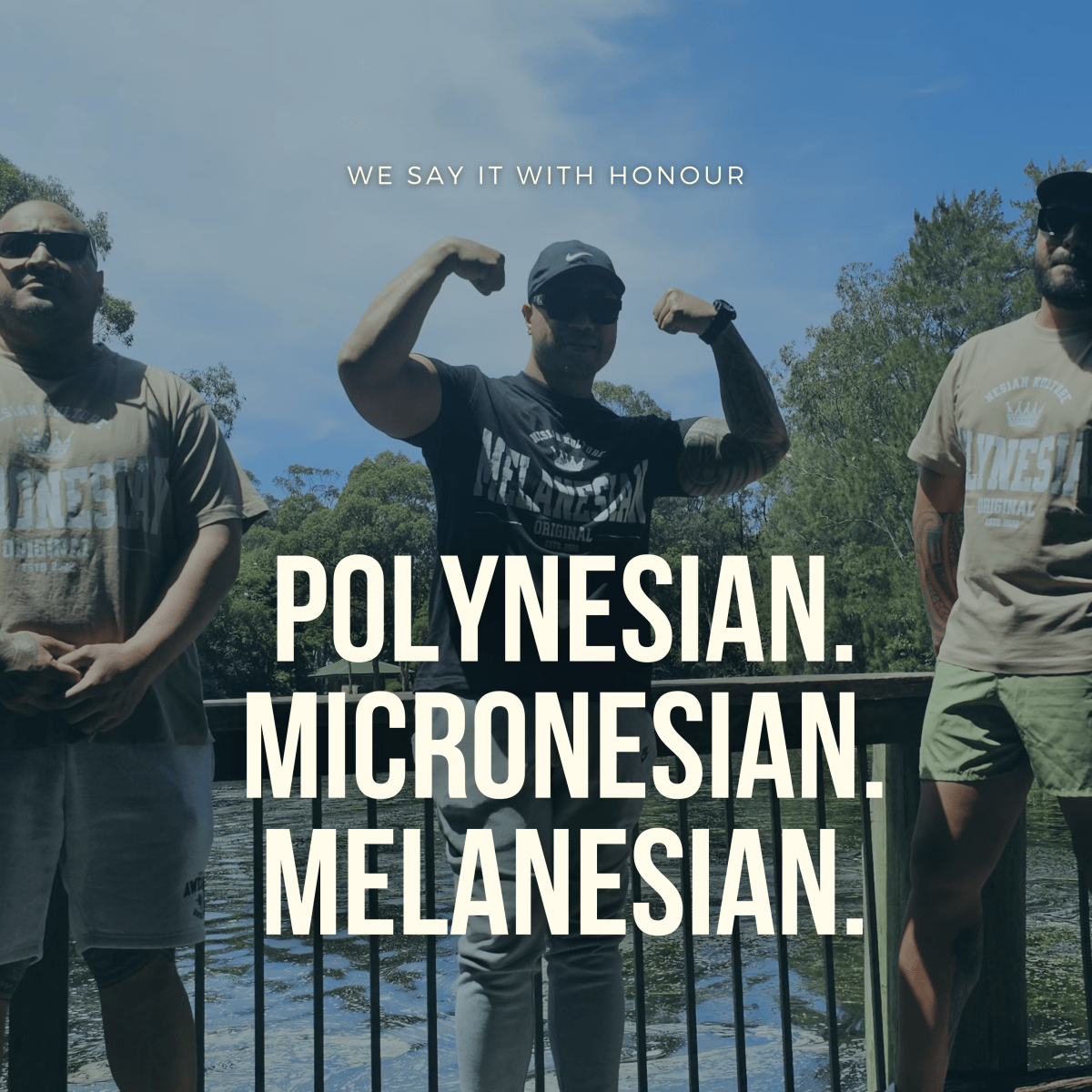
We Still Say Polynesian, Micronesian & Melanesian — And We Say It With Honour
Some say we shouldn’t use names like Polynesian, Micronesian, or Melanesian. At Nesian Kulture, we believe those names no longer...
En savoir plus